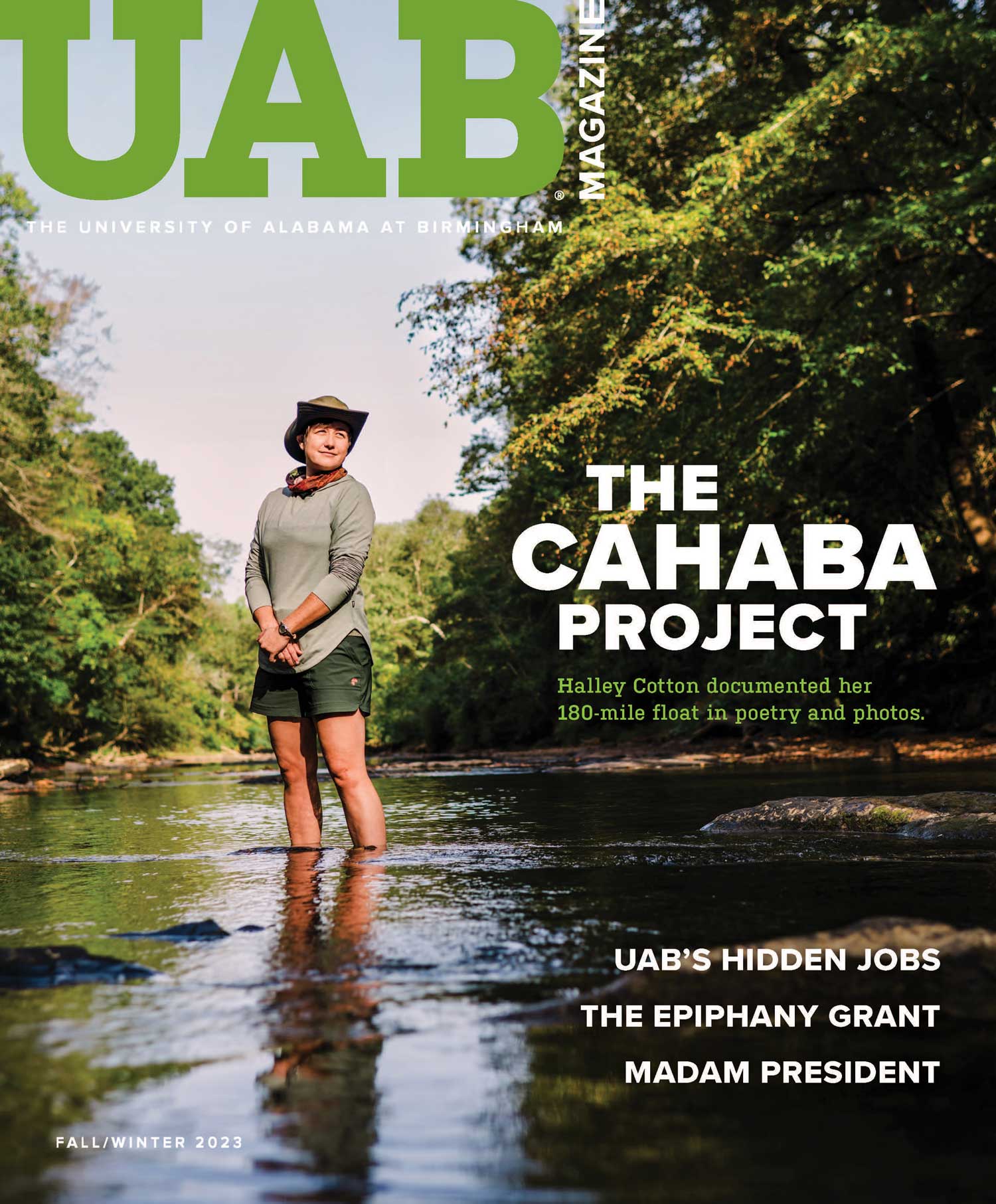The new dean of UAB’s School of Optometry is about to drop some knowledge on you:
Your over-the-counter drops may not do anything to help your burning, irritated dry eyes. “The technology is changing, so understanding the kind of dry eye you have can lead to a more targeted therapy,” says Kelly K. Nichols, O.D., M.P.H., Ph.D. Just picking up any over-the-counter tear drops without knowing if they contain the right components to help your eyes “is a mistake many dry-eye sufferers make.”
Nichols is one of the world’s leading vision scientists for dry-eye disease, which affects an estimated 12 to 20 million Americans, particularly women and the elderly. Her research focuses on protein markers and lipid and tear secretions in dry eye, as well as treatment pathways. At the University of Houston, Nichols cofounded and directed an institute for bench-to-bedside research on ocular surface conditions and treated dry-eye patients. Though routine exams can detect dry eye, Nichols suggests that patients schedule a specific dry-eye exam to look at tears, tear functions, eyelids, eyelashes, and associated glands. The eye-care practitioner can then help patients find relief by recommending appropriate artificial tear drops, teaching patients to clean their eyes properly, and prescribing medications if necessary.
Nichols plans to continue her translational research at UAB. “The School of Optometry is fortunate to be associated with a major medical center,” she says, and the proximity to UAB’s other health-professional schools makes initiating collaborative research as easy as walking across the street. “I haven’t found a door that’s not open or a face on the other side who isn’t willing to help,” she says. She anticipates “a lot of clinical and research activity” on dry eye and contact lenses in her lab, joined by her husband and research partner, Jason J. Nichols, O.D., M.P.H., Ph.D., and five Ph.D. students—four of whom followed them from Houston. (Jason Nichols also has been named UAB’s assistant vice president for industry research development.)
The School of Optometry faces an “exciting time” thanks to The Campaign for UAB, Nichols says. “We’re going to renovate parts of our building and focus on scholarships, while maintaining the excellent research profile and strong education that are recognized internationally. We’re also reaching out to our alumni family; we want to be a big team working together to spruce up the school inside and outside.”
She is also eager to be part of her new community. Nichols has enjoyed discovering the “hidden surprises” of local neighborhoods and meeting fellow runners, though she finds the city’s hills a little intimidating. She, her husband, and two sons also look forward to exploring Alabama’s great outdoors. “Everything’s so close here,” she says. “You can get across town in 20 minutes; in Houston, that takes you only a tiny distance.”
Your over-the-counter drops may not do anything to help your burning, irritated dry eyes. “The technology is changing, so understanding the kind of dry eye you have can lead to a more targeted therapy,” says Kelly K. Nichols, O.D., M.P.H., Ph.D. Just picking up any over-the-counter tear drops without knowing if they contain the right components to help your eyes “is a mistake many dry-eye sufferers make.”
Nichols is one of the world’s leading vision scientists for dry-eye disease, which affects an estimated 12 to 20 million Americans, particularly women and the elderly. Her research focuses on protein markers and lipid and tear secretions in dry eye, as well as treatment pathways. At the University of Houston, Nichols cofounded and directed an institute for bench-to-bedside research on ocular surface conditions and treated dry-eye patients. Though routine exams can detect dry eye, Nichols suggests that patients schedule a specific dry-eye exam to look at tears, tear functions, eyelids, eyelashes, and associated glands. The eye-care practitioner can then help patients find relief by recommending appropriate artificial tear drops, teaching patients to clean their eyes properly, and prescribing medications if necessary.
Nichols plans to continue her translational research at UAB. “The School of Optometry is fortunate to be associated with a major medical center,” she says, and the proximity to UAB’s other health-professional schools makes initiating collaborative research as easy as walking across the street. “I haven’t found a door that’s not open or a face on the other side who isn’t willing to help,” she says. She anticipates “a lot of clinical and research activity” on dry eye and contact lenses in her lab, joined by her husband and research partner, Jason J. Nichols, O.D., M.P.H., Ph.D., and five Ph.D. students—four of whom followed them from Houston. (Jason Nichols also has been named UAB’s assistant vice president for industry research development.)
The School of Optometry faces an “exciting time” thanks to The Campaign for UAB, Nichols says. “We’re going to renovate parts of our building and focus on scholarships, while maintaining the excellent research profile and strong education that are recognized internationally. We’re also reaching out to our alumni family; we want to be a big team working together to spruce up the school inside and outside.”
She is also eager to be part of her new community. Nichols has enjoyed discovering the “hidden surprises” of local neighborhoods and meeting fellow runners, though she finds the city’s hills a little intimidating. She, her husband, and two sons also look forward to exploring Alabama’s great outdoors. “Everything’s so close here,” she says. “You can get across town in 20 minutes; in Houston, that takes you only a tiny distance.”




